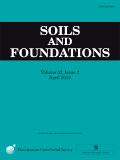
Soils and Foundations
Scope & Guideline
Transforming foundations with cutting-edge scientific insights.
Introduction
Aims and Scopes
- Geotechnical Engineering Research:
The journal emphasizes research related to the behavior and characterizations of soils under various loading conditions, including static and dynamic analyses. - Soil-Structure Interaction:
A core focus on how soil properties influence the performance of structures, including foundations, retaining walls, and earthworks. - Innovative Testing and Modeling Techniques:
The journal encourages the development and application of new experimental methods and numerical modeling techniques to improve the understanding of soil mechanics. - Environmental Geotechnics:
Research addressing the interaction between soil and environmental factors, including contamination, remediation, and sustainability practices. - Seismic and Dynamic Behavior of Soils:
A significant area of interest includes the study of liquefaction, ground motion impacts, and the behavior of soils under seismic loading conditions. - Material Behavior and Stabilization Techniques:
Investigation into the mechanical properties of soils, including stabilization methods and the use of alternative materials for improved soil performance.
Trending and Emerging
- Data-Driven Approaches and Machine Learning:
There is an increasing trend towards the use of data analytics, machine learning, and artificial intelligence in predicting soil behavior and enhancing design methodologies. - Sustainability and Eco-Friendly Practices:
Research focusing on sustainable practices, including the use of recycled materials and eco-friendly soil stabilization techniques, is gaining traction. - Advanced Numerical Modeling:
The use of sophisticated numerical methods, including finite element and discrete element methods, is on the rise, allowing for more accurate simulations of complex soil-structure interactions. - Behavior of Composite Materials and Innovative Foundations:
Emerging studies on composite materials and innovative foundation systems, such as hybrid and multi-material foundations, are becoming more prevalent. - Resilience and Adaptation to Climate Change:
Research addressing the impacts of climate change on soil behavior, including flooding, erosion, and landslides, is increasingly relevant and featured prominently.
Declining or Waning
- Traditional Soil Mechanics:
Topics focused solely on classical soil mechanics principles without integration of recent technological advancements are becoming less frequent as researchers pivot towards more innovative methodologies. - Static Analyses in Isolation:
Research that solely emphasizes static analyses without consideration of dynamic factors, such as seismic events, is decreasing as the field recognizes the importance of dynamic behavior. - Single-Factor Studies:
Investigations that examine only one variable in isolation, without considering multi-factor interactions, are less common as interdisciplinary approaches gain traction. - Historical Case Studies:
While case studies remain important, there is a noted decline in publications that focus exclusively on historical cases without applying contemporary analytical techniques or technological advances. - Non-Environmental Geotechnics:
Research that does not address environmental considerations, such as sustainability or contamination, is waning as environmental impacts become increasingly critical in geotechnical studies.
Similar Journals
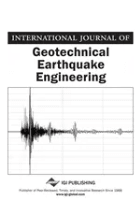
International Journal of Geotechnical Earthquake Engineering
Elevating global discourse on earthquake impacts in geotechnical engineering.International Journal of Geotechnical Earthquake Engineering, published by IGI Global, serves as a pivotal platform for researchers and practitioners in the field of geotechnical engineering and engineering geology. Established in 2010, this journal has steadily promoted the dissemination of innovative research and advancements in understanding the impact of seismic activities on soil behavior and structural integrity. Operating out of the United States, it caters to a global audience and offers a range of articles that delve deep into the dynamics of earthquake engineering. With a 2023 Scopus ranking placing it in the 39th percentile among its peers and a Q4 designation in the relevant quartile, the journal actively seeks to elevate the discussion around geotechnical challenges associated with seismic events. While currently not classified as an Open Access journal, it remains committed to providing valuable insights that aid in the prevention and mitigation of geotechnical failures during earthquakes. Researchers, professionals, and students alike will find this journal an essential resource for the latest developments and practical applications in this ever-evolving field.

Periodica Polytechnica-Civil Engineering
Exploring the Frontiers of Civil Engineering ResearchPeriodica Polytechnica-Civil Engineering is a prestigious journal published by the Budapest University of Technology and Economics, dedicated to advancing the field of civil engineering through high-quality research and innovative practices. Established in 1972, the journal has transitioned through various phases of publication and now spans an expansive range of topics within civil and structural engineering, geotechnical engineering, and engineering geology. With an impact factor indicating its growing influence and a commendable placement in the Q3 quartile according to the latest 2023 metrics, it recognizes contributions that bridge theoretical advancements with practical applications. While currently not open access, the journal remains a vital resource for researchers, professionals, and students seeking to stay abreast of the latest developments in engineering design, construction techniques, and geotechnical innovations. The continuous publication of significant research after almost five decades underscores its commitment to disseminating knowledge crucial for the world’s infrastructure challenges, making it an essential reference point within the engineering community.
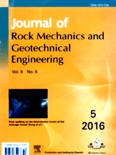
Journal of Rock Mechanics and Geotechnical Engineering
Unlocking Solutions for Tomorrow’s Geotechnical ChallengesThe Journal of Rock Mechanics and Geotechnical Engineering is a premier open-access publication dedicated to advancing the field of geotechnical engineering and engineering geology. Published by SCIENCE PRESS and based in China, this journal has been a vital resource for researchers and professionals since it transitioned to open access in 2013. With ISSN 1674-7755 and E-ISSN 2589-0417, it has established a global reputation, evidenced by its impressive Q1 ranking in the category of Geotechnical Engineering and Engineering Geology as well as a remarkable 8th rank out of 229 in Earth and Planetary Sciences, placing it in the 96th percentile according to Scopus. The journal aims to publish high-quality research that addresses contemporary challenges in the field, offering insightful perspectives and innovative solutions. Researchers, professionals, and students are encouraged to engage with the latest findings and methodologies published within its pages, which span from 2013 to 2024 and continue to pave the way for future advancements in geotechnical practices.

Magazine of Civil Engineering
Showcasing Excellence in Civil Engineering ScholarshipMagazine of Civil Engineering, published by ST-PETERSBURG STATE POLYTECHNICAL UNIVERSITY, is a prominent open access journal dedicated to the field of civil and structural engineering. With an ISSN of 2712-8172 and E-ISSN 2071-0305, it serves as a vital platform for disseminating high-quality research, innovative methodologies, and current trends in building and construction. Since its inception in 2010, the journal has embraced open access, ensuring broad visibility and accessibility for its contributions to the academic community. The magazine holds a respectable position in the academic hierarchy, ranked in the Q3 quartile for both Building and Construction and Civil and Structural Engineering categories as of 2023. It is indexed in Scopus, amplifying its societal impact and reach with a rank of #114/223 in Building and Construction and #224/379 in Civil and Structural Engineering. Researchers, professionals, and students alike are encouraged to engage with the cutting-edge studies presented in the magazine, contributing to the advancement of knowledge and practice within the civil engineering domain.

International Journal of Physical Modelling in Geotechnics
Elevating understanding of geotechnics through rigorous modeling.The International Journal of Physical Modelling in Geotechnics, published by Emerald Group Publishing Ltd, is a leading platform dedicated to advancing the field of geotechnical engineering and engineering geology. With a focus on the practical applications of physical modeling, this journal contributes significantly to the understanding of soil and rock behavior under various conditions, making it invaluable for researchers, professionals, and students alike. Heightened by its Q2 ranking in its category and a notable 61st percentile ranking among its peers, this journal has established itself as a credible source of knowledge and innovation within the academic community. Although it does not currently offer open access, its rigorous peer-review standards ensure the dissemination of high-quality research and insights. The journal, covering a timeline of topics from 2011 to 2024, aims to bridge the gap between theory and practice, ultimately fostering advancements in geotechnical solutions necessary for infrastructure development. To stay at the forefront of geotechnical research, contributing authors and engaged readers are encouraged to explore and participate in this dynamic academic discussion.
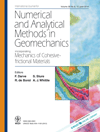
INTERNATIONAL JOURNAL FOR NUMERICAL AND ANALYTICAL METHODS IN GEOMECHANICS
Exploring the Frontiers of Numerical and Analytical MethodsWelcome to the International Journal for Numerical and Analytical Methods in Geomechanics, a prestigious publication dedicated to advancing the fields of geotechnical engineering and computational mechanics. Published by Wiley in the United Kingdom, this journal has been at the forefront of research since its inception in 1977 and continues to provide a vital platform for disseminating innovative methodologies and analytical approaches through 2024. With an impressive impact factor reflecting its excellence, the journal consistently ranks in the Q1 category across multiple domains, including Computational Mechanics, Geotechnical Engineering, and Engineering Geology, making it a key resource for specialists seeking to keep informed on important developments in these areas. Although it does not offer open access, the journal remains highly regarded among researchers and professionals for its rigorous peer-review process and commitment to scientific integrity. As a vital contributor to the field, International Journal for Numerical and Analytical Methods in Geomechanics invites researchers, professionals, and students to explore its comprehensive studies and to advance knowledge at the intersection of numerical analysis and geomechanics.

CANADIAN GEOTECHNICAL JOURNAL
Connecting Researchers and Practitioners in Geotechnical ScienceCanadian Geotechnical Journal, published by Canadian Science Publishing, stands as a premier resource in the field of geotechnical engineering, focusing on the science and practice of soil mechanics, engineering geology, and related disciplines. Established in 1968, this esteemed journal has earned a distinguished reputation, holding a Q1 ranking in both Civil and Structural Engineering as well as Geotechnical Engineering and Engineering Geology as of 2023. It features a rigorous peer-review process that ensures the publication of high-quality research, making it essential reading for researchers, professionals, and students alike. With an impressive Scopus rank of #63 out of 379 in Civil and Structural Engineering and #41 out of 229 in Geotechnical Engineering, the journal continues to contribute significantly to the advancement of knowledge in geotechnics. While the journal does not currently provide open access options, it remains a vital platform for disseminating innovative findings and fostering academic collaboration in the geotechnical community.

JOURNAL OF GEOTECHNICAL AND GEOENVIRONMENTAL ENGINEERING
Leading the Way in Environmental and Geotechnical Engineering ExcellenceThe JOURNAL OF GEOTECHNICAL AND GEOENVIRONMENTAL ENGINEERING, published by the ASCE-American Society of Civil Engineers, stands as a pivotal platform for disseminating innovative research in the fields of geotechnical and geoenvironmental engineering. With an impressive impact factor, this journal is ranked Q1 in both Environmental Science and Geotechnical Engineering and Engineering Geology, illustrating its prominence and significant contributions to the scientific community (Scopus Ranks: 38/229 and 48/233, respectively). The journal is dedicated to advancing knowledge and understanding of critical subjects such as soil behavior, environmental sustainability, and the interplay between geotechnics and environmental issues. Operating under the principle of open access, it ensures that vital research is accessible to a global audience, facilitating collaboration and innovation among researchers, professionals, and students alike. Since its inception in 1996, the journal has consistently evolved, with a commitment to maintaining high standards of scholarship and relevance in addressing contemporary challenges in civil and environmental engineering.

Transportation Infrastructure Geotechnology
Transforming Transportation through Geotechnical Excellence.Transportation Infrastructure Geotechnology, an esteemed journal published by SpringerNature, serves as a vital platform in the fields of Civil and Structural Engineering, Environmental Engineering, Geotechnical Engineering, and Transportation. Established in 2014 and spanning a decade of significant scientific discourse, this journal has gained recognition for its robust contribution to the understanding of the interplay between geotechnical processes and transportation infrastructure. With an impactful Q2 ranking in multiple categories—including Civil and Structural Engineering and Environmental Engineering—it emphasizes innovative research and practical applications globally. Researchers and professionals can explore critical topics that influence infrastructure sustainability, safety, and efficiency. Although it operates under a subscription model, its affiliation with SpringerNature ensures rigorous peer-review and high-quality publications, making it an indispensable resource for academics and industry experts alike.
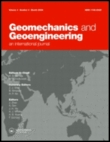
Geomechanics and Geoengineering-An International Journal
Driving Progress in Soil and Rock MechanicsGeomechanics and Geoengineering-An International Journal, published by Taylor & Francis Ltd, serves as a prominent platform for the dissemination of innovative research and advancements in the fields of Geotechnical Engineering and Engineering Geology. With an ISSN of 1748-6025 and E-ISSN of 1748-6033, this journal has established itself as a critical resource within its category, ranking in the Q2 quartile according to the 2023 metrics and positioning itself in the top 38% of the Scopus rankings for Earth and Planetary Sciences. Geomechanics and Geoengineering encompasses a diverse range of topics, including but not limited to soil mechanics, foundation engineering, rock mechanics, and environmental geotechnics, ultimately aiming to advance both theoretical and practical knowledge in these vital areas. This journal not only highlights pioneering research but also facilitates a platform for academia and industry practitioners to collaborate and exchange ideas. While it does not offer open access, it remains a valuable resource for institutions and individuals committed to enhancing their expertise in the geotechnical domain. With convergence years spanning from 2006 to 2024, this journal is equipped to significantly contribute to the evolving landscape of geomechanical research.